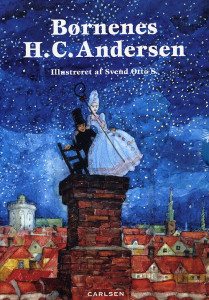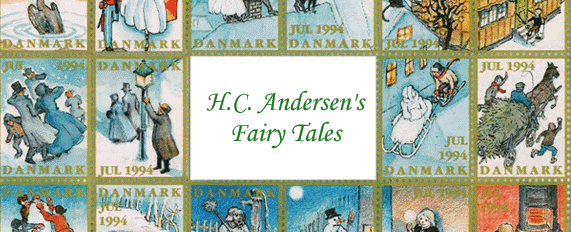Fairy Tales: Not Simply a Happily-Ever-After
[dropcap]B[/dropcap] eing read to as a child is one thing that really helps us to develop interest for reading and learn our language before we are able to read ourselves. Growing up in a bilingual household meant that my mum often read Danish books to me even when I was going to school and learning how to read and write in English. One of the books that really hooked me as I was growing up, and that allowed me to develop my skills as a young Danish speaker, was my collection of Hans Christian Andersen’s fairy tales or eventyr. The dark and unrelentingly melancholic stories were read out to me before bed, and when I could read myself I enjoyed flicking through my beautifully illustrated copy that I had received for my christening in anticipation of the day where I could truly enjoy the tales myself.
 Whilst all fairy tales seem to posses dark and serious undertones about the severity and harsh reality of life, HC Andersen’s tales always take me into a world unknown and persistently cruel, often without a glimmer of hope. Everyone knows Andersen’s eventyr, even if they may not be able to put a name to them. Probably the most famous is The Little Mermaid’ made famous by Disney (though to any Andersen fan the Disney version is almost blasphemous as it sweeps the horrific ending under a ‘Disney-fied’ disguise – a made up noun which we all understand as making something cute or having a ‘happily ever after’). In Hans Christian Andersen’s fairy tales a true ‘happily ever after’ usually never happens. Instead The Little Mermaid must suffer in pain for the rest of her life to get what she wants, the little match stick girl dies alone on a cold street after having lit all her matches trying to keep the vision of her dead grandmother alight, and the fir tree who rejoices in becoming a Christmas tree is cut up and burned.
Whilst all fairy tales seem to posses dark and serious undertones about the severity and harsh reality of life, HC Andersen’s tales always take me into a world unknown and persistently cruel, often without a glimmer of hope. Everyone knows Andersen’s eventyr, even if they may not be able to put a name to them. Probably the most famous is The Little Mermaid’ made famous by Disney (though to any Andersen fan the Disney version is almost blasphemous as it sweeps the horrific ending under a ‘Disney-fied’ disguise – a made up noun which we all understand as making something cute or having a ‘happily ever after’). In Hans Christian Andersen’s fairy tales a true ‘happily ever after’ usually never happens. Instead The Little Mermaid must suffer in pain for the rest of her life to get what she wants, the little match stick girl dies alone on a cold street after having lit all her matches trying to keep the vision of her dead grandmother alight, and the fir tree who rejoices in becoming a Christmas tree is cut up and burned.
This is not to say that plenty of Andersen’s fairy tales do not have happy endings, but they all carry a very heavy message usually at the expense of a completely resolved ending. The thing that I love about these stories are their ability to shock a young reader, beautifully written in English and in their native Danish, Andersen’s words reflect a timeless age and imagined worlds where sometimes the impossible happens, but it is always understood in the context of a child’s world whilst also carrying relevance for adults alike.
What really made this book special for me were the illustrations. Beautifully painted with watercolour, Svend Otto S. illustrated pictures made Andersen’s fairy tales come to life, even when I didn’t understand all the words as a small child and was confused by two different languages. For me, the paintings told the story, still allowing me to capture the true essence of Andersen’s stories.

Comments